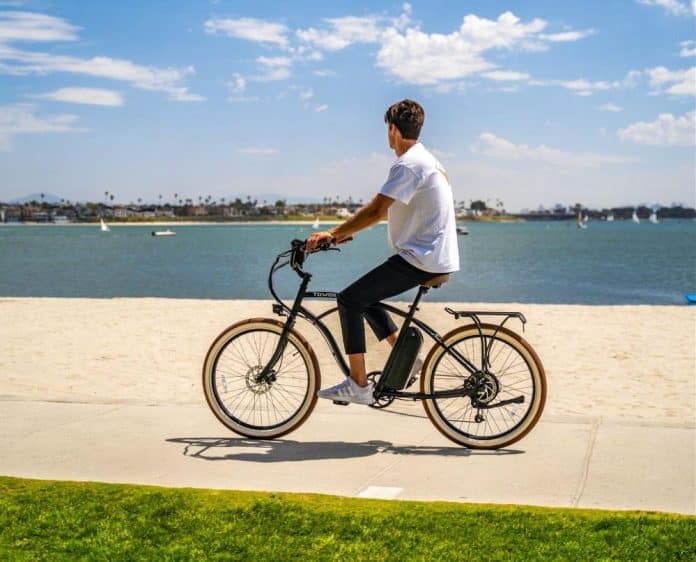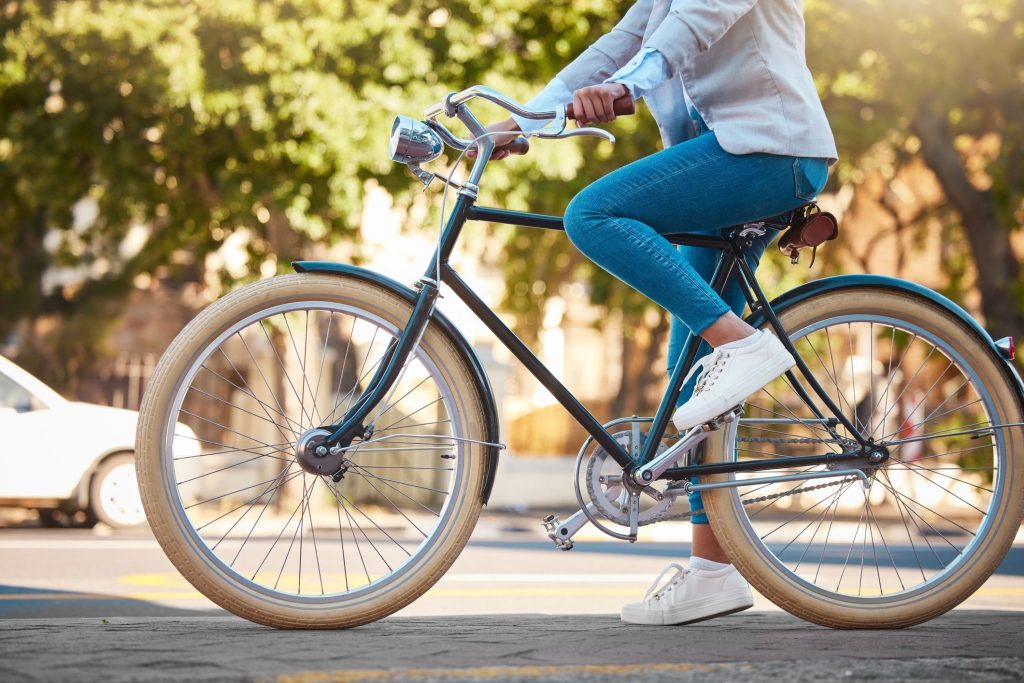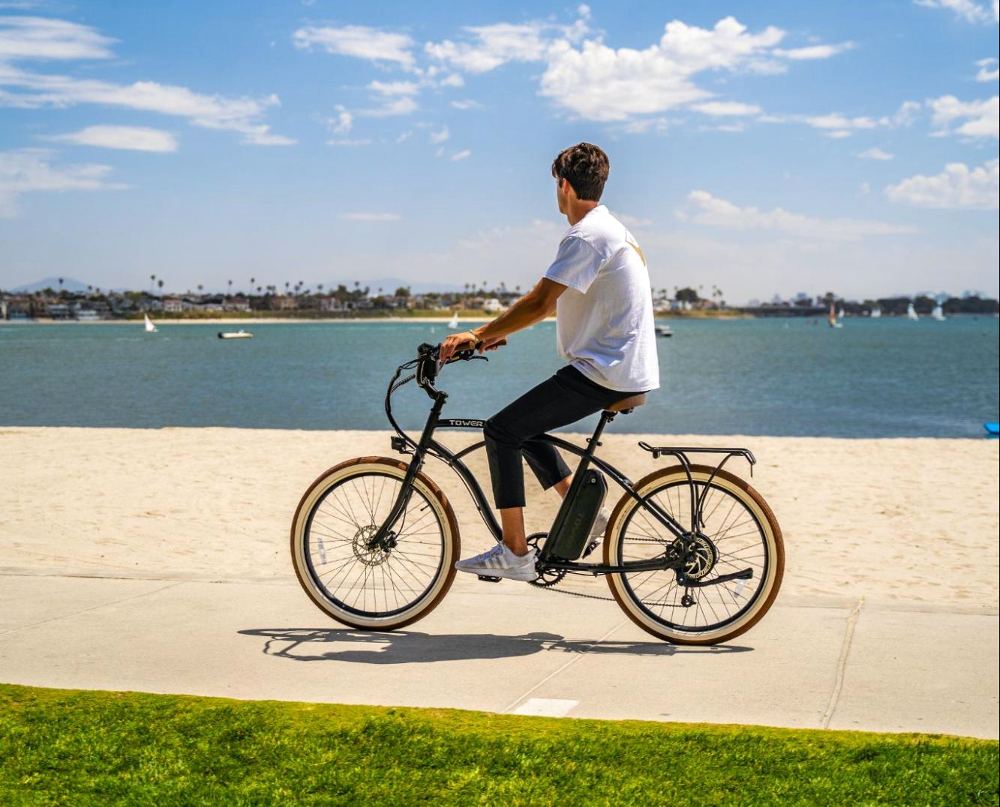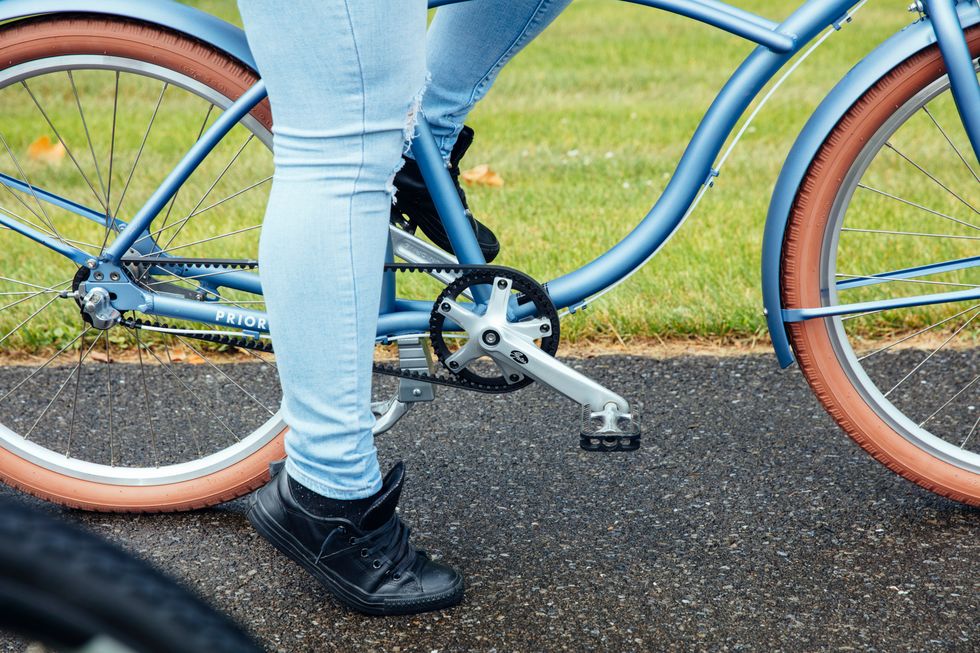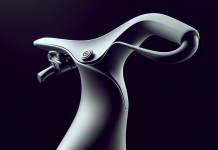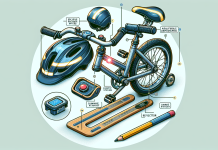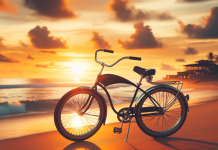I am interested in learning how to ride a cruiser bike. Well, look no further! This article will explore the best way to master the art of cruising on two wheels.
Whether you’re a beginner or looking to improve your skills, we’ve got you covered.
So saddle up, adjust your mirrors, and prepare for an exciting journey towards becoming a skilled and confident rider.
Table of Contents
Selecting the Right Cruiser Bike
When selecting the right cruiser bike, it’s essential to consider your riding style. Cruiser bikes are known for their comfortable and relaxed riding experience, perfect for leisurely rides around the neighborhood or the beach. Before purchasing, consider where you plan to ride and what type of terrain you’ll encounter. Are you looking for a bike for casual rides on flat ground, or is there a chance you might encounter some hills along the way? Understanding your riding style will help you choose the right bike that suits your needs.
In addition to riding style, choosing the correct frame size for your cruiser bike is crucial. The frame size determines the overall fit and comfort of the bike. Riding a bike that is too small or too big can lead to discomfort and potential injury. Consider your height and inseam measurement to determine the correct frame size for you.
Most bike manufacturers provide size charts that can guide you in selecting the appropriate frame size based on your measurements. Taking the time to find the correct frame size will ensure a more enjoyable and comfortable riding experience.
Lastly, when selecting a cruiser bike, please pay attention to the quality of its components. A bike with high-quality components will not only provide a smoother ride but also require less maintenance in the long run.
Components such as brakes, gears, and wheels should be durable and reliable. Investing in a bike with reputable and trusted brands for these critical parts is worth investing in.
Getting the Right Gear
Once you have selected the right cruiser bike, getting the right gear is vital to ensure a safe and comfortable ride. The first and most essential piece of gear is a helmet. Wearing a helmet is critical for protecting your head in case of accidents or falls. Look for a helmet that is well-fitted and certified for safety standards. It should sit snugly on your head and have adjustable straps to keep it secure during your rides.
In addition to a helmet, wearing protective clothing while riding a cruiser bike is essential. This can include items such as padded cycling shorts, gloves, and a comfortable shirt or jersey. These clothing pieces provide added protection and comfort, especially during longer rides. Padded cycling shorts help cushion your seat and prevent chafing, while gloves provide grip and protect your hands from blisters. Opt for lightweight and breathable materials that wick away sweat to keep you cool and comfortable throughout your rides.
Choosing the right shoes is another important consideration. While cruiser bikes are often ridden without specialized cycling shoes, wearing closed-toe shoes with a firm grip is still essential. Sneakers or athletic shoes are suitable for most cruiser bike rides. Avoid wearing sandals or flip-flops, as they do not provide the necessary support and protection for your feet while cycling.
This image is the property of hips.hearstapps.com.
Prepping Yourself and the Bike
Before hopping on your cruiser bike, take a few pre-ride steps to ensure your safety and the bike’s optimal performance. One of the first steps is adjusting the seat height. Sit on the bike and place your feet on the ground. Your feet should be able to touch the ground comfortably with a slight knee bend. Adjust the seat height accordingly, ensuring a proper leg extension while pedaling.
Checking the bike’s tires and brakes is also essential before each ride. Ensure the tires are properly inflated and do not show any signs of wear and tear. Check for any cuts or punctures that might cause a flat tire during your ride. Additionally, inspect the brakes to ensure they are functioning correctly. Squeeze the brake levers and ensure the pads properly engage the rims or discs and provide sufficient stopping power.
Balancing and steering is a crucial skill to master when riding a cruiser bike. Find a flat, open area to practice balancing on your bike. Start by placing one foot on a pedal, then gently push off with the other foot and maintain your balance as you ride in a straight line. Practice steering by subtly leaning your body and using your arms to guide the bike in the desired direction. These exercises will help you gain confidence and control over your cruiser bike.
Mastering the Basics of Riding
Once you have prepped yourself and the bike, it’s time to master the basics of riding a cruiser bike. Mounting and dismounting the bike are the first skills to learn.
Approach the bike from the left side, hold onto the handlebars, and swing one leg over the seat to straddle the bike. Place your foot on the pedal at the top and push down to start riding. To dismount, slow down and apply the brakes, then swing your leg over the seat and step down with one foot.
Starting and pedaling smoothly are fundamental skills when riding a cruiser bike. Put your foot on a pedal in the starting position, with the other foot on the ground for stability. Push off with your foot on the ground and apply gentle pressure to the pedal simultaneously. Once you gain momentum, continue pedaling in a smooth and even manner. Practice starting and stopping to build confidence and control.
Braking and coming to a stop are essential skills to ensure your safety while riding. To slow down or stop, squeeze the brake levers gradually and evenly. Avoid slamming the brakes, as this can cause skidding and loss of control. As you come to a stop, place one foot on the ground to support yourself and keep the bike upright. Practice braking smoothly and efficiently to develop good habits and control.
This image is the property of lastheplace.com.
Building Confidence and Control
After mastering the basics of riding, it’s time to build confidence and control on your cruiser bike. Riding in a straight line is a skill that requires focus and balance. Find a straight, open area and maintain a constant speed while looking ahead and keeping your body relaxed—practice keeping the bike steady without swerving or veering off course. As you become more comfortable, challenge yourself by straightening your arms and focusing on a fixed point in the distance.
Turning and changing directions are essential skills for maneuvering your cruiser bike. Start by taking turns from your hips and shoulders, gently leaning the bike to the desired side. Practice making wide turns and gradually progress to tighter turns. Remember to look in the direction you want to go and keep your body position balanced and controlled. With practice, you will develop smooth and confident turning skills.
Navigating obstacles is another important aspect of riding a cruiser bike. Learn how to safely and confidently maneuver around potholes, debris, or other objects in your path. Shift your weight slightly back, relax your grip on the handlebars, and lift your bottom off the seat to absorb any bumps or obstacles. With practice, you’ll be able to navigate through obstacles smoothly without losing control.
Developing Riding Skills
To further enhance your riding skills, improving your cruiser bike’s balance and stability is essential. This can be done through exercises such as riding in a straight line without your hands on the handlebars or riding at a slow, controlled speed while maintaining balance. Gradually challenge yourself by removing one foot from the pedal and balancing on one leg for a few seconds. These exercises will help develop core strength and stability, making you a more confident rider.
Gaining speed and control is another aspect of developing your riding skills. Take your cruiser bike to a flat, open area and practice accelerating gradually. Focus on maintaining a smooth and controlled pedal stroke and increase your speed in small increments. As you gain confidence, practice shifting gears to optimize your pedaling efficiency and power. You can confidently ride at higher speeds while maintaining control and stability with practice.
Climbing and descending hills can be challenging for beginner riders. It’s essential to approach hills with the right gear and maintain a steady pace. When climbing, shift to a lower gear to make pedaling easier and maintain a consistent pace.
Keep your body relaxed and focus on your breathing. When descending, shift to a higher gear and gently maintain a controlled speed by gently applying your brakes—practice hill climbing and descending to improve your overall riding skills.
This image is the property of hips.hearstapps.com.
Safety Tips and Riding Etiquette
While riding your cruiser bike, it’s essential to prioritize safety and follow proper riding etiquette. Staying visible and alert is crucial to ensure your safety on the road. Wear bright or reflective clothing, especially when riding in low-light conditions. Use lights and reflectors on your bike to increase visibility to other road users. Always be aware of your surroundings and anticipate potential hazards or obstacles.
Using hand signals is essential for communicating your intentions to other road users. Learn and practice the appropriate hand signals for indicating turns and stops. Signaling your intentions helps other cyclists, pedestrians, and motorists anticipate your movements and ensures a safer riding experience for everyone.
Sharing the road with others is a critical component of riding etiquette. Cyclists should obey traffic laws, ride in the same direction as traffic, and yield to pedestrians. Be respectful and considerate of other road users, using designated bike lanes or sharing the road when necessary. Practice good communication and awareness to create a harmonious environment for all.
Seeking Professional Instruction
To take your riding skills to the next level, seeking professional instruction can be highly beneficial. Enrolling in a bike training course or working with a bike trainer can provide valuable guidance and individualized instruction to improve your riding technique and confidence. These professionals can assess your skills, identify areas for improvement, and provide customized training plans to help you reach your riding goals.
Joining a group ride is another great way to learn from experienced cyclists and enhance your riding skills. Group rides offer opportunities to learn from others, challenge yourself, and build camaraderie with fellow cyclists. Look for local cycling clubs or organizations that organize group rides suitable for your skill level and interests. Riding with others can provide motivation and support as you develop as a cyclist.
This image is the property of www.wikihow.com.
Learning Resources and Practice Areas
In addition to seeking professional instruction, various learning resources and practice areas are available to enhance your riding skills. Online tutorials and videos provide instructional content on various aspects of riding, from bike handling skills to maintenance tips. Take advantage of these resources to learn new techniques and gain insights from experienced cyclists.
Finding suitable areas for safe and uninterrupted practice is essential when practicing your riding skills. Start by riding in traffic-free areas such as parks, empty parking lots, or quiet residential streets. These areas provide ample space to practice balancing, turning, and braking without worrying about traffic or distractions. As you progress, utilize bike paths and trails to simulate real-world riding conditions while maintaining a safe and controlled environment.
Continuing to Learn and Grow
Learning to ride a cruiser bike is a continuous journey that offers endless opportunities for growth and exploration. To continue learning and growing as a cyclist, it’s important to practice regularly. Make riding a part of your routine and set aside dedicated time. Consistent practice will help you refine your skills and build endurance, whether it’s a short, leisurely ride or a longer-distance adventure.
Exploring different terrains is another way to expand your cycling experience. While cruiser bikes are often associated with flat terrain, don’t be afraid to venture into new areas with varying landscapes. Ride on hilly roads dirt trails, or even take your cruiser bike on a beach ride. Each new terrain will present unique challenges and help you become a versatile rider.
Participating in cycling events and competitions can be a thrilling way to enhance your riding skills further and connect with the cycling community. Look for local races, charity rides, or organized cycling tours that align with your interests and skill level. These events provide opportunities to challenge yourself, gauge your progress, and bond with fellow cyclists who share your passion for riding.
Learning to ride a cruiser bike is an exciting and fulfilling journey with the right mindset, dedication, and practice. Focus on mastering the basics, building confidence and control, and continually seeking growth opportunities. Remember to prioritize safety, follow riding etiquette, and enjoy the pleasure of cruising on your bike. Happy riding!

